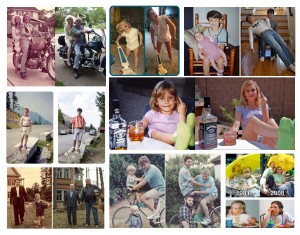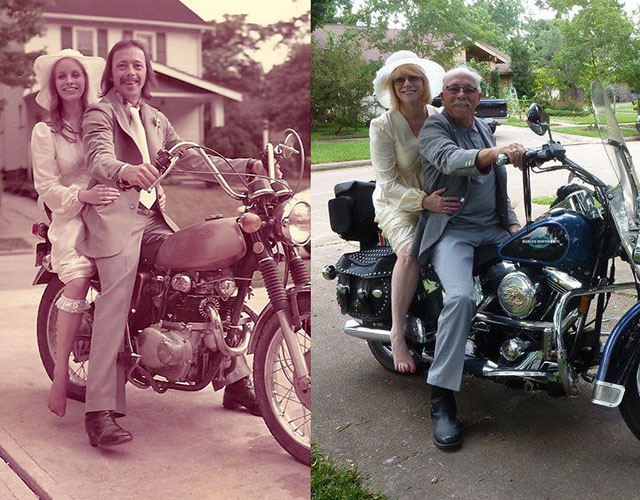People all around the world seem to have the same idea as Ugne. As you can see in images below they have taken sentimental or normal images and recreated them some time later. i find this type of photography interesting as you can see the changes the people and items have gone through in the time period between the two pictures. 
For example, the couple below got married and took a photograph on a motorcycle as shown on the left. 40 years later! on their 40th wedding anniversary they tried recreated the image, a view visual errors but they also tried to take it in the same drive way as they did 40 years prior.
Another example would be a father and son also did a similar thing outside their family home. They took an image on the grass outside their house and then recreated it 20 years later! and succeeded as they paid good attention to detail, such as clothes and even the football the son was holding.










































